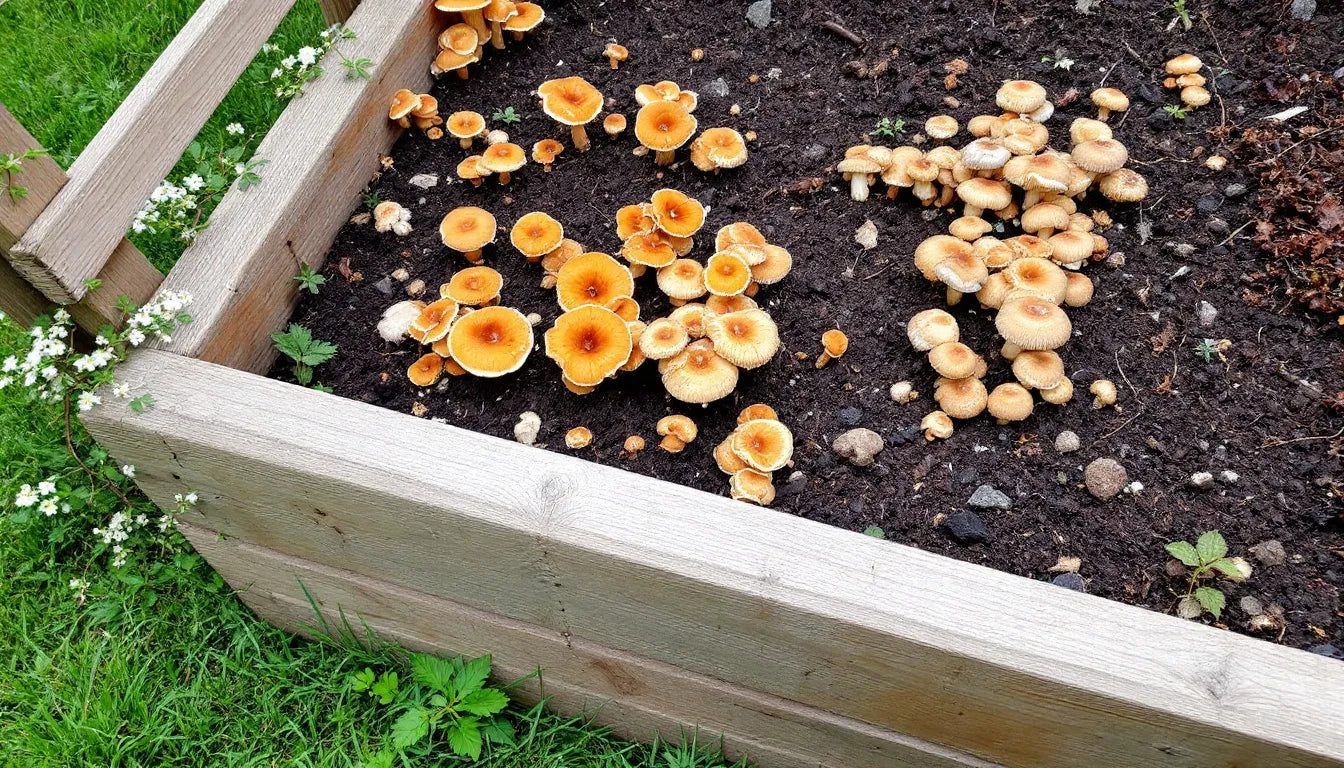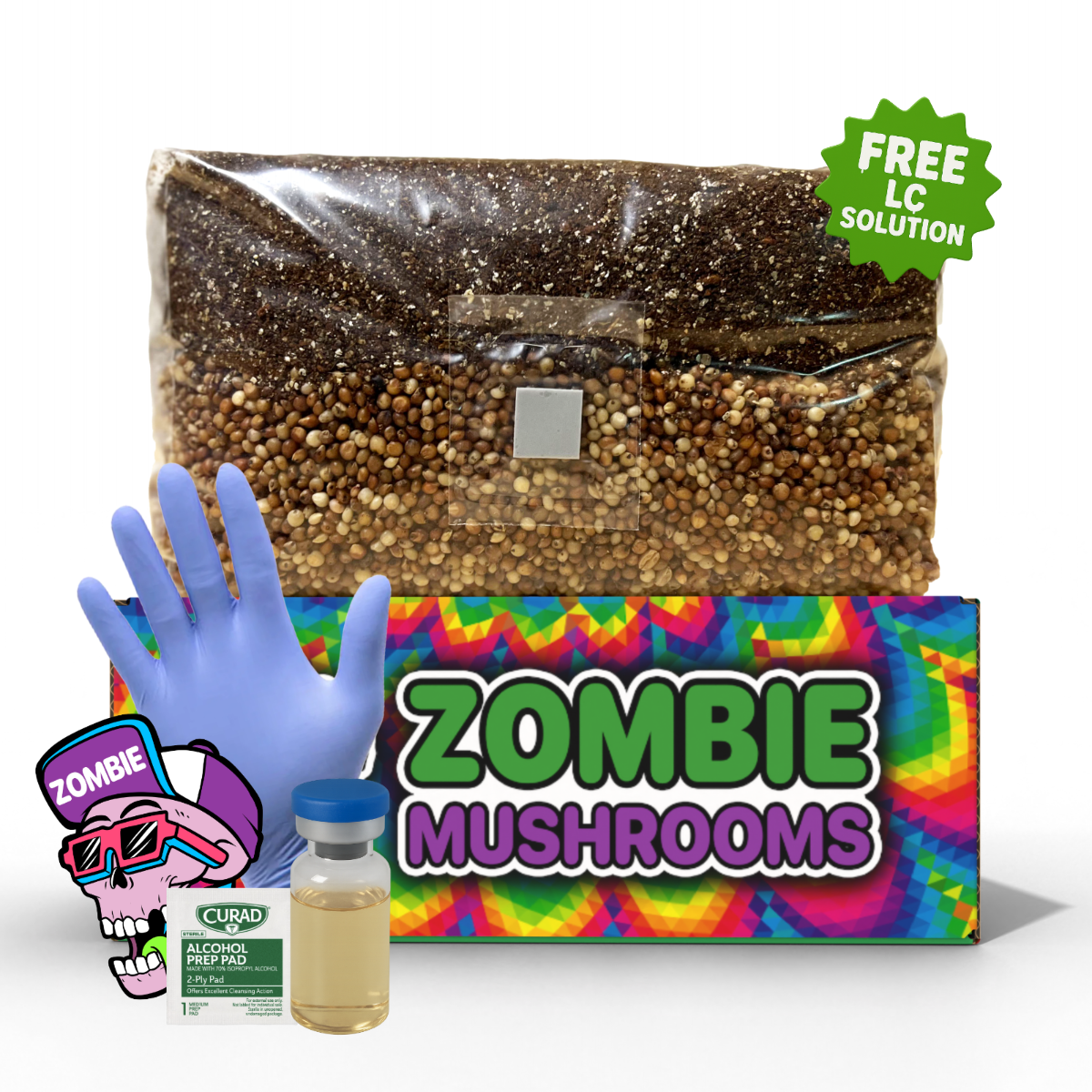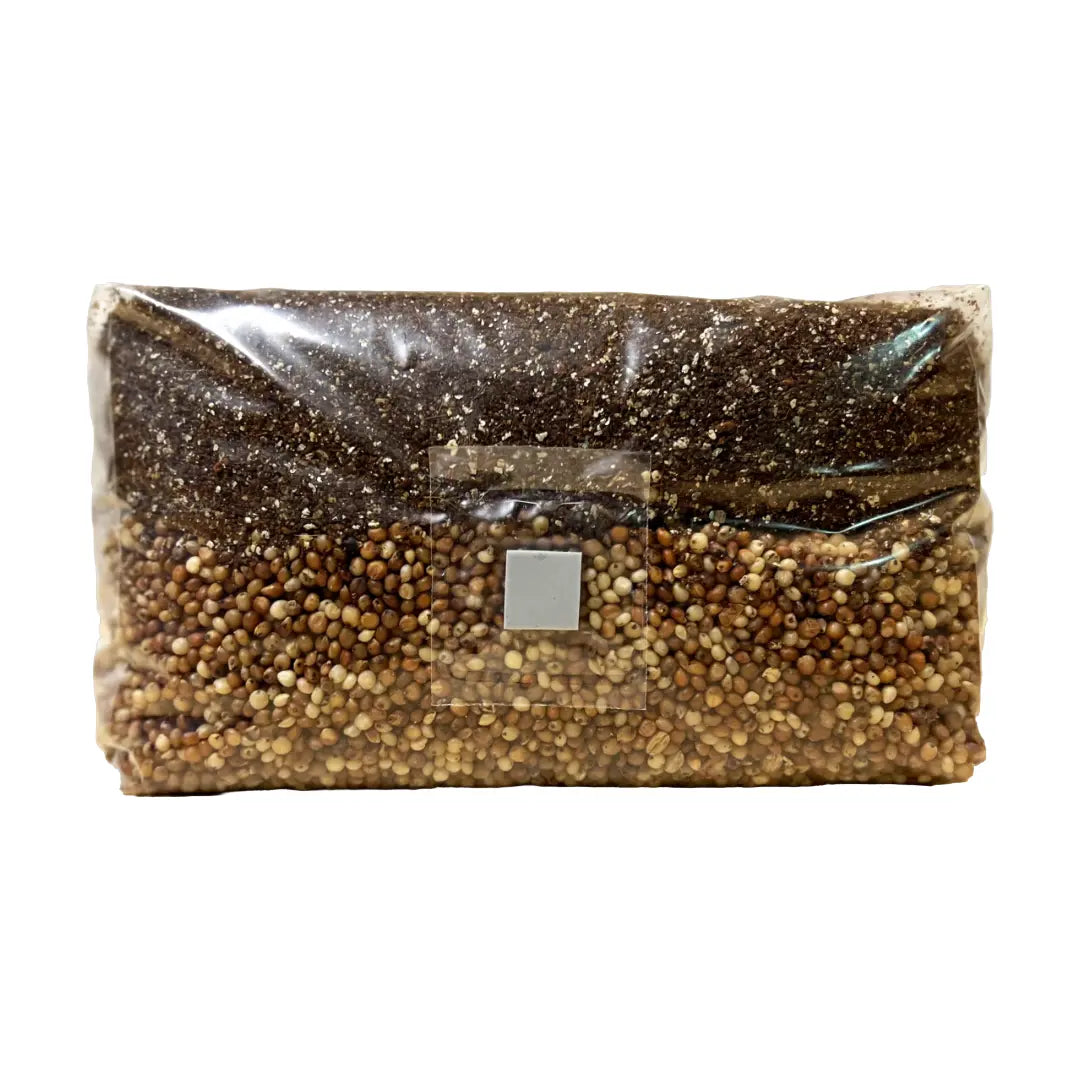⬇️ Prefer to listen instead? ⬇️

- Portobello mushrooms are the fully mature stage of Agaricus bisporus, the same species as button and cremini mushrooms.
- As mushrooms get older, chitin levels and umami compounds increase, making texture and flavor better.
- Chemical makeup like water content, protein, and micronutrients changes a lot across mushroom growth stages.
- Growing mushrooms at home is possible with basic gear and knowing how mushrooms grow.
- Harvesting at the wrong time can really change mushroom taste, texture, and how much you get when growing at home.
Understanding Portobello Mushrooms and Their Growth Stages
Portobello mushrooms represent the mature form of Agaricus bisporus, sharing lineage with button and cremini mushrooms. As they progress through their growth stages, they gain texture, rich flavor (umami), and develop different chemical profiles. Whether you’re slicing buttons for a salad or grilling full-size portobellos, understanding these stages helps you get the best results. If you want hands-on experience, using mushroom grow bags or starter kits allows you to observe each stage—from spore germination to full harvest—within your own home or small grow setup.

Meet Agaricus bisporus: One Species, Many Forms
The fungus known as Agaricus bisporus is grown all over the world and commonly appears in three forms, all representing different mushroom growth stages
- Button mushrooms (youngest): White, smooth, mild, and widely used raw or lightly cooked.
- Cremini/Baby bella mushrooms (intermediate stage): Brownish, slightly more robust, and popular in savory dishes.
- Portobello mushrooms (fully mature): Large, flat, meaty, and rich in flavor—ideal grilled, stuffed, or roasted.
Each form gives a unique mix of texture, flavor, and nutritional properties. While all three versions are genetically the same, how they grow changes what you can do with them in the kitchen a lot. Whether you're a chef or hobbyist, knowing how these stages change gives you better control over how they taste, feel, and even their health benefits.

Lifecycle of Portobello Mushrooms: Key Growth Phases
Knowing how mushrooms grow—from a tiny spore to a full-sized portobello—is key to both cooking with them and growing mushrooms at home. Each growth stage directly changes the mushroom's shape, weight, nutrition, and how long it lasts.
Spore Germination (5–10 Days)
Every mushroom starts as a microscopic spore. Unlike plant seeds, fungal spores need specific conditions to sprout
- Humidity levels above 85%
- Warm temperatures between 70°F and 80°F
- A substrate with nutrients such as composted straw or manure
Once conditions are right, spores develop into thread-like structures called hyphae. When compatible hyphae meet, they join up to form a web-like network—the start of mycelium.
Mycelial Growth (2–3 Weeks)
The hyphae spread and weave together, creating the mycelium, a thick network under the ground or hidden, from which mushrooms will eventually fruit. In this important stage
- Mycelium spreads through the substrate, eating up organic matter.
- White, fuzzy threads become visible on the surface.
- Keeping the right temperature (65–75°F) and clean conditions stops contamination.
This stage builds the base for your mushroom crop. A strong mycelial base will help grow healthier pins and bigger mushroom caps later on.

Primordia (Pin) Formation (5–10 Days)
Once the mycelium is ready and the environment signals like getting air, cooler temps, and high humidity come together, it starts forming primordia, also called "pins" or "pinheads"
- These are small, knot-like bumps that show up on the substrate surface.
- They show the change from growing the network to making fruit.
Keeping humidity above 90%+ and cooler temps (55–65°F) is very important now. If there isn't enough moisture, your pins might stop growing or die.
Fruiting Body Development (10–25+ Days)
Pins get bigger and become full mushrooms. As they grow, the cap gets wider, the gills get darker, and the veil (a thin skin covering the gills) tears—button mushrooms are the only exception, they stay covered. Controlling the environment here decides
- How big they get
- How long until you can pick them
- How good the final product is and how it feels
How fast this happens changes based on temperature, type, and nutrients, but with good care, this stage gives you harvests that cover everything—from buttons to portobellos.

Detailed Growth Stages of Portobello Mushrooms
Different age-related forms of Agaricus bisporus can be picked at various times. Here’s more about how each growth stage looks.
Stage 1: Button Mushrooms (14–17 Days from Pinning)
- Cap Size: 20–30 mm
- Color: Bright white or cream
- Veil: Not broken, cap fully covered
- Texture: Wet, soft; lots of water
Often picked while still young, these mushrooms are packed with energy from growing but have light flavor. Their plain taste makes them great for soaking up spices, oils, or marinades.
Stage 2: Cremini/Baby Bella Mushrooms (17–21 Days from Pinning)
- Cap Size: 30–40 mm
- Color: Light to deep brown
- Veil: Starting to tear
- Texture: Thicker, holds up better
Cremini mushrooms start to get deeper earthy tastes compared to buttons. They also stay good a bit longer and are better for cooking in a pan.
Stage 3: Cup Stage (Optional Intermediate Before Portobello)
- Cap Size: 30–50 mm
- Color: Tan to medium brown
- Veil: Fully torn, showing some gills
- Unique Traits: Good mix of flavor and firmness
Even though not as common in stores, the cup stage offers a good choice for both home cooks and those who like trying new things in the kitchen. With a more balanced feel, it works well for sautés that need both moisture and structure.
Stage 4: Portobello Mushrooms (21–28+ Days from Pinning)
- Cap Size: 4–6+ inches
- Color: Dark brown with a wide, flat top
- Gills: Fully showing, chocolate brown or almost black
- Texture: Meaty, less water, very strong
Full-grown portobello mushrooms are well-liked for their thick, muscle-like feel. They are great for main dishes for vegans, instead of sandwiches, and for baking or grilling.

How Mushroom Texture, Color, and Shape Change
As mushrooms get older from buttons to portobellos, you'll see big changes:
The more the cap opens, the more water it loses. This means it doesn't go bad as fast but tastes and feels better when you chew it—exactly what makes portobello mushrooms good instead of meat.

Biochemical Changes Across the Growth Stages
What makes up a mushroom changes a lot as it gets older, affecting both how good it is to cook with and its nutrition.
Moisture and Mass
- Button mushrooms have up to 92% water.
- Portobellos average closer to 89%, letting flavors get stronger.
- Less water means thicker texture and stays whole longer when cooking.
Protein and Carbohydrates
While mushrooms don’t have a lot of carbs overall, the type changes
- Younger forms have more glucose-based carbs.
- Older mushrooms get more structural fiber.
- Protein levels, based on dry weight, go up a little as fruit bodies get older.
Chitin and Fiber
- Chitin, a fibrous compound also found in insect shells, goes up with age.
- This increase helps make portobellos feel firm and chewy.
- Chitin also adds fiber, which is good for digestion and helping with cholesterol.
Lipids and Micronutrients
- Older mushrooms have a bit more unsaturated fats.
- They are also better sources of:
- Potassium, good for heart health
- Selenium, something that fights damage in the body
- Niacin, good for your body's processes and skin
Umami
Portobellos have more glutamic acid...
This makes umami, or a deeper savory taste, stronger. This happens mostly because
- Cell walls break down
- Water dries up
- Taste compounds like nucleotides get more concentrated
That’s why older mushrooms need less seasoning—they taste great on their own.

Nutritional Power of Portobello Mushrooms
One large portobello mushroom gives you
- Only 18.5–30 calories
- 306 mg of potassium (about 9% of what you need daily)
- A decent source of niacin, selenium, and even vitamin D
- Beta-glucans and fiber that help your body fight sickness and keep your gut healthy
Mushrooms have no fat, low sodium, and work for most diets including gluten-free, paleo, vegetarian, and vegan ways of eating.

Cooking Tips by Growth Stage
Each growth stage is good for different things in the kitchen.
Button Mushrooms
- Slice raw into fresh salads
- Toss into watery soups for a mild taste
- Cook quickly in a pan over toast with herbs or garlic butter
Cremini (Baby Bella)
- Good for stir-fries or meals in a pan
- Adds depth to pasta sauces
- Cooks well in the oven with root vegetables
Portobello
- Grill like burger patties or steak
- Make a hole and fill with quinoa, cheeses, or peppers
- Serve with balsamic glaze or stuffing
Flavor Enhancers
Add these to make dishes better across all stages
- Herbs: Thyme, rosemary, and oregano
- Acids: Balsamic vinegar, lemon, or wine
- Things that add umami: Soy sauce, tamari, fermented miso

Selecting the Best Mushrooms
When you shop
- Pick firm mushrooms with dry, clean tops
- Don't pick any that are slimy or have dark spots
- Caps that are not open mean younger mushrooms
- Open, darker gills mean older stages like portobello
For grilling or searing, pick older ones. For fresh salads or light cooking, stick with younger ones.

Growing Mushrooms at Home: A Fun DIY Adventure
Growing mushrooms at home is easier than it sounds—and portobello mushrooms are one of the best types for beginners. With patience and the right things, you can pick mushrooms like you get at a restaurant in your kitchen or backyard.
What You Need
- Clean substrate: Compost or straw mixed with gypsum
- Spawn/Culture: You can get spores, liquid culture, or grain spawn
- Containers: Storage bins, trays, or grow bags
- Casing Layer: Wet peat and lime for moisture on the surface
- Gear to Control Humidity: Misting bottle, hygrometer, or humidity dome

Cultivation Steps for Portobello Mushrooms
- Clean substrate well and pack it into your growing tray
- Put in mycelium or spawn
- Wait 14–21 days for mycelium to grow all through
- Add casing layer and mist every day
- Make temperatures cooler to start pinning
- Keep humidity above 90% as mushrooms grow
- Pick when they are the size you want—wait for caps to flatten for true portobellos
Don't water too much or let temperatures change too fast. LEDs or indirect sunlight help you watch the environment.

Common Growing Problems & Fixes
| Problem | Cause | Fix |
|---|---|---|
| Contamination | Dirty tools or space that isn't clean | Always clean everything and use gloves |
| No pins form | Too dry or warm | Add more moisture and lower temperatures |
| Mushrooms stop growing | Not enough airflow or too crowded | Let more air in and give them space |
| Fruiting size is small | Substrate is thin or casing isn't good | Make substrate richer and keep moisture right |

Storing Fresh Mushrooms Properly
- Use paper bags instead of plastic
- Keep in the refrigerator, the veggie drawer is best
- Don't wash until you are ready to use them
- Use within a week for freshness, especially buttons
- Portobellos might last 8–10 days after picking

Frequently Asked Questions (FAQs)
-
Are button, cremini, and portobello mushrooms the same species?
Yes—they are all Agaricus bisporus at different maturity stages. The differences are in size, cap shape, color, veil status, texture, and flavor. -
How long does it take from spawn to full-size portobello?
Usually about 4-6 weeks depending on strain, substrate, temperature, and environmental conditions. -
Do growth stages affect nutritional content?
Yes. As mushrooms mature, moisture decreases slightly, flavor compounds like umami increase, chitin and fibrous content may rise, and certain micronutrients concentrate. -
Which stage is best for grilling vs eating raw?
For raw or mild cooking, button or cremini work best. For grilling, roasting, or stuffing, mature portobello caps are ideal due to robust texture and flavor. -
Can I achieve all these stages if growing at home with kits or bags?
Absolutely. With consistent temperature, humidity, and using tools like mushroom grow bags or proper composted substrate, home growers can go from button all the way to portobello.
Take Your First (Mush)Step
With a good knowledge of the mushroom growth stages, especially the big portobello mushroom, you are now ready to try things out in both the kitchen and the garden. Whether you're enjoying each step of growth on your plate or being brave enough to grow your own, this cool fungus offers many uses and feels good to work with. Start growing mushrooms at home with tools and spawn from Zombie Mushrooms, and bring great taste right to your home.
References
- WebMD. (n.d.). Health Benefits of Portabella Mushrooms. Retrieved from https://www.webmd.com/diet/health-benefits-portabella-mushrooms
- Britannica. (n.d.). Portobello Mushroom | Britannica. Retrieved from https://www.britannica.com/topic/portobello-mushroom



